Click to view our Accessibility Statement or contact us with accessibility-related questions






PRODUCTS YOU MAY LIKE
Trending Posts in Audiophile

Simthaniel
Rigs
Modded headphones with qudelix at the core
When I received the Qudelix 5K, I had already modified a pair of Superlux HD-681 headphones. I previously soldered my own balanced connections to the drivers, providing multiple ways to connect and...
Apr 14, 2024

brothamike
A decent set of IEMs
I am in the midst of a 300 hour burn-in but, I will say I am enjoying how this set sounds so far. Before I received these which was btw late by a few weeks, I purchased a Sony/Kimber Kable MMCX...
Apr 12, 2024
merrick97
Should I exchange the PC38X for better headphones?
I bought the PC38X headphones FOR GAMING and they are great, but I have NO use for a Microphone since I don't do competitive gaming and I was wondering if there were better headphone options at a similar price without a headphone, where (presumably) more of the cost was put into making it sound better. I also find that my PC38X don't get quite as loud as I would like and I was wondering if a cheap amp like the iFi Go link would draw a little more volume out of my phones. https://www.amazon.com/dp/B0BN6MM822?psc=1&ref=ppx_yo2ov_dt_b_product_details I went with the PC38X since it was considered the best bang for buck headphones. I care most about using spatial apps like DOlby Atmos and DTS Headphone:X. Suggestions are welcome.
Apr 11, 2024

LostnAmerica
Sound Signature of the Grell Project.
Wondering what type of sound signature the Drop Grell project headphones will have or trying to attain. Any update would be appreciated.
Apr 8, 2024

Fabulous
Looking for a gaming/content audio setup
Hello! I'm looking for recommendations on audio setups. I'd be planning on using it mostly for gaming. Preferably I'd like a pair of large closed back headphones since I have a big head and jaw. I'd also like to hear myself through my mic with mic monitoring. As far as budget goes, I don't really have one. But under 600$ would be nice. I can go higher if needed. The audio setup would be connected to a high performance PC. Thank you in advance for any recommendations!
Apr 4, 2024

1plsd
$10 Drop Coupon Email not sent?
Trying to buy some gear off Drop for the first time. I was told I would receive an email with a welcome to drop $10 off promo. I never received that email. Drop was able to send me emails for my login token and email for Password update. But for some reason the $10 off coupon was never sent to me.
Mar 31, 2024

NMPacella
New here
Hello, I just joined, primarily for the audiophile products. Looking at purchasing the NHT C3 speakers for our new living room. Space is about 15 feet wide by 33 long and they will fire long ways. Space is just for general listening, music room with all equipment is downstairs, so hoping they will fill it with sound nicely. Cheers.
Mar 18, 2024
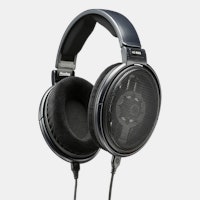
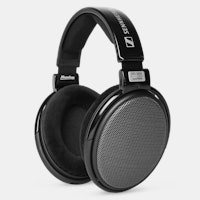

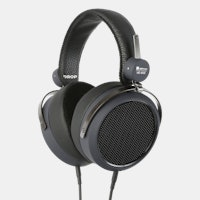
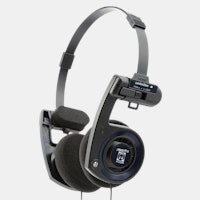
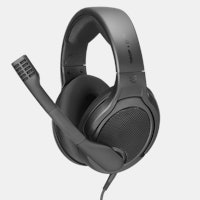
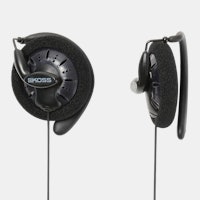
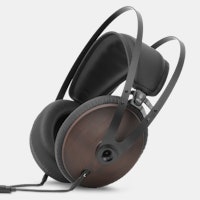
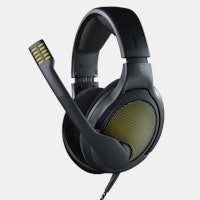
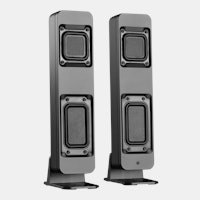
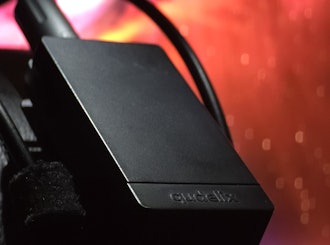
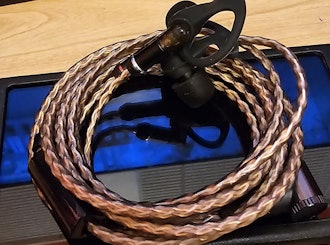
After listening casually to the CTH for a couple of weeks, I got serious about testing. My source is an Onkyo C7030 CD player, and my headphones are 32 ohm Beyerdynamic DT-880 Premiums. Sweet cans that I've had for over a year, but I'm practically wetting my pants with anticipation waiting for the delivery of my Massdrop x Focal Elex phones. No external DAC required for this rig - the Onkyo's DAC is perfectly capable of performance signal processing.
For the first test of the CTH, I listened to three harpsichord suites by Handel, recorded in 1991 by Anthony Newman. I felt that the sound was a bit veiled and slightly distant. This impression was quickly overturned when I bypassed the amp and listened to three more suites from the same disc directly from the Onkyo's headphone output. Without the amp, the harpsichord seemed less distinct, less present, less lively. The second test on the next night (detailed below) supported the amp's ability to clearly define and enhance the sound.
Test two left me with mixed feelings. Tests like these are necessarily highly subjective, and we as listeners are preconditioned to believe that quality equipment will produce vastly improved sound. In short, I was prejudiced to hear amazing results from the CTH. That said, I fell into the trap and fell in love with this amplifier. It's definitely a winner. Going forward, I will undoubtedly have a tough time enjoying headphone listening without an amp.
This test consisted of the following selections, played one after the other through the Onkyo's headphone output, then again through the CTH.
"Weird Al" Yankovic: Craigslist J.S. Bach: Sonata in C, BWV 1033 for flute and continuo, performed by Maxence Larrieu, Rafael Puyana, and Wieland Kuijken in 1967. EMF: Unbelievable - House mix C.M. von Weber: Overture to "Der Freischütz" with Antal Dorati and the Royal Concertgebouw Orchestra, recorded in 1959 Led Zeppelin: Rock and Roll
Actually not much to say about Craigslist. Al to me sounds great pretty much all the time under most conditions.
The flute sonata was a different story. While the flute sounded good both times, Kuijken's viola da gamba was the star with the CTH. Rather than being muddy and melting vaguely into the harpsichord's left hand, with the amp it came forward and was a clear and unique equal in the ensemble. Also of note was the stopped harpsichord's upper register - it was pleasingly bright and clear, with a nice pop.
EMF was the highlight of the program. This was the mind-altering listening experience I have been seeking. The keyboards, percussion, and bass were outstanding. Normally I pay little attention to vocals, but this time they were so clear and natural that they totally grabbed my attention. The best part, though, was the left-right channel oscillation effects that left my head gently and happily spinning.
Dorati's Weber recording suffers from more than the average level of ambient noise. Random rattles and shuffles appear to emanate from the orchestra - loud page turns and other non-scored sounds, possibly horn slides being removed to empty condensation, random tapping of shoes, music stands being moved, etc. The noise is audible with most rigs, but obviously with a performance amp like the CTH, it became extra clear and somewhat of a distraction. Other than that, the significant difference from the first to the second audition was the woodwinds, particularly the oboes. They came forward and participated with more charm and life.
Led Zeppelin's best benefit from the CTH was John Paul Jones's bass playing - the amp really cleaned up the bass line, making it more articulate and musical.
A word on cables - I had ordered an Audioquest RCA-RCA cable to connect the CD player to the amp. When the amp arrived and I hooked things up, I was dismayed to discover an intermittent fault in the cable's left channel. I initially thought I had done something wrong with the tube and removed and reinserted it several times, but no, it was definitely the cable. I had to send back the AQ and swap it for a gimme cable I had lying around. The cheap one works fine, but I would like to upgrade at some point. I do have an AQ that connects my Magni to my FiiO X3 2nd gen, and it is awesome.
A word on burn-in/run-in - I was mildly surprised and amused that this unit ships with burn-in instructions, and that the designer himself goes into detail on the drop page. I'm personally convinced that audio equipment does not magically improve by being used a certain way over a certain period of time. The ONLY things that change are the listener's ears and mind and how they process the sound.
Listening to music -really listening - often requires serious effort. The more one practices, the more the skill becomes second nature. I have found that the CTH eases the burden, making the listening effort easier and the payoff even more rewarding.
Since my sources and cables were different, comparing Schiit's Magni 3 to the Cavalli tube hybrid was almost comparing apples and oranges. I did use my DT-880 Pros again for this comparison.
I used the first four tracks from the Play That Funky Music compilation album: Wild Cherry's Play That Funky Music, Brick House from the Commodores, Lady Marmalade by Labelle, and Lipps, Inc.'s Funkytown. First I listened through the Schiit, playing the FLAC versions with the FiiO X3 2nd gen. I then listened to the FiiO directly with no headphone amp. Finally, I played the CD audio versions with my Onkyo CD player connected to the CTH. To be thorough, I should have tried the CD player without the amp, but I was tired and wanted to go to bed.
The risk of repeated listening of the same music on different equipment is that the listener may be conscious of more details on each repetition, essentially "learning" the music and what to listen for.
Having voiced these caveats, my initial impression was that the CTH totally blew away the Magni. This is not extremely surprising, as the CTH gives the sense of being more substantial: heavier, bigger, runs hotter, and most impprtantly, is 2.5 times the price. Again, we are conditioned to believe that pricier equipment is better.
The CTH effortlessly rendered without fatigue full, widely spaced, rich, musically engaging sound. The instrumental separation was outstanding.
The FiiO's output definitely benefitted from the Magni in the strength, depth and width of sound the amp has to offer. Strangely, the Magni actually seemed to mask some of the details, especially in the percussion and low brass - sounds that were more conspicous through the FiiO alone, and were downright attention-grabbing with the CTH. Also problematic was Lady Marmalade - Magni's performance was almost cluttered and jarring, bordering on fatiguing. Even so, no regrets whatsoever about the Schiit. This session with the Beyers was a little shaky, but I still love the way this amp really makes my HE 150Pro earbuds come alive.